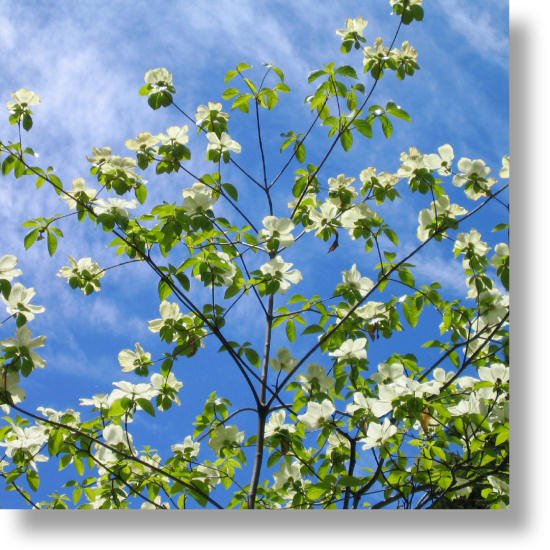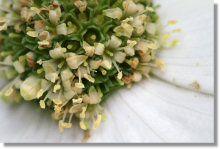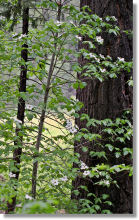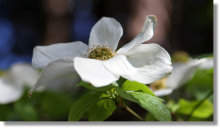
Mountain Dogwood (Cornus nuttallii)
Aliases: Pacific Dogwood, Pacific Mountain Dogwood
Habitat: The Mountain Dogwood tree is common throughout Yosemite Valley, but especially along the banks of the Merced River in the western half of the valley and just as you enter the valley from El Portal. You can also spot them along Highway 41 and the early stretches of the Glacier Point Road, along the Wawona Meadow loop, the Lewis Creek trail, and throughout Nelder Grove, where the dogwood gets its own placard along the trail, an honor usually reserved just for Giant Sequoias and lectures about ecology.
Size: The trees you see blooming are usually 10 - 30 feet tall. The flowers, or at least what appear to be the flowers, are large, typically 3 or 4 inches across. They are not in fact single flowers, though, but heads of tiny flowers surrounded by petal-like bracts. They bloom in bunches, making a flowering dogwood tree an arresting sight.
Flowering Season: April through June, depending on elevation. Besides having large flowers, the mountain dogwood is one of the leading contributors to Yosemite Valley's display of fall colors.
The flower bracts start with a greenish tint, but turn white by the time the actual flowers start to blossom. You may find dogwoods with pink blooms on the grounds of the Ahwahnee Hotel, but these are ringers, smuggled in from a nursery elsewhere.
Lifespan: Perennial
Origins: Native (see distribution maps for California and US/Canada)
Cornus nuttallii etymology: Cornus is the Latin word for horn, referring to the hardness of the wood. Nuttallii is homage to English botanist Thomas Nuttall (1786 - 1859).
This Photo: Near the Hawksworth Tree along the Graveyard of the Giants Trail in Nelder Grove, late May
Other Resources: CalFlora · CalPhotos · USDA · fed.us


